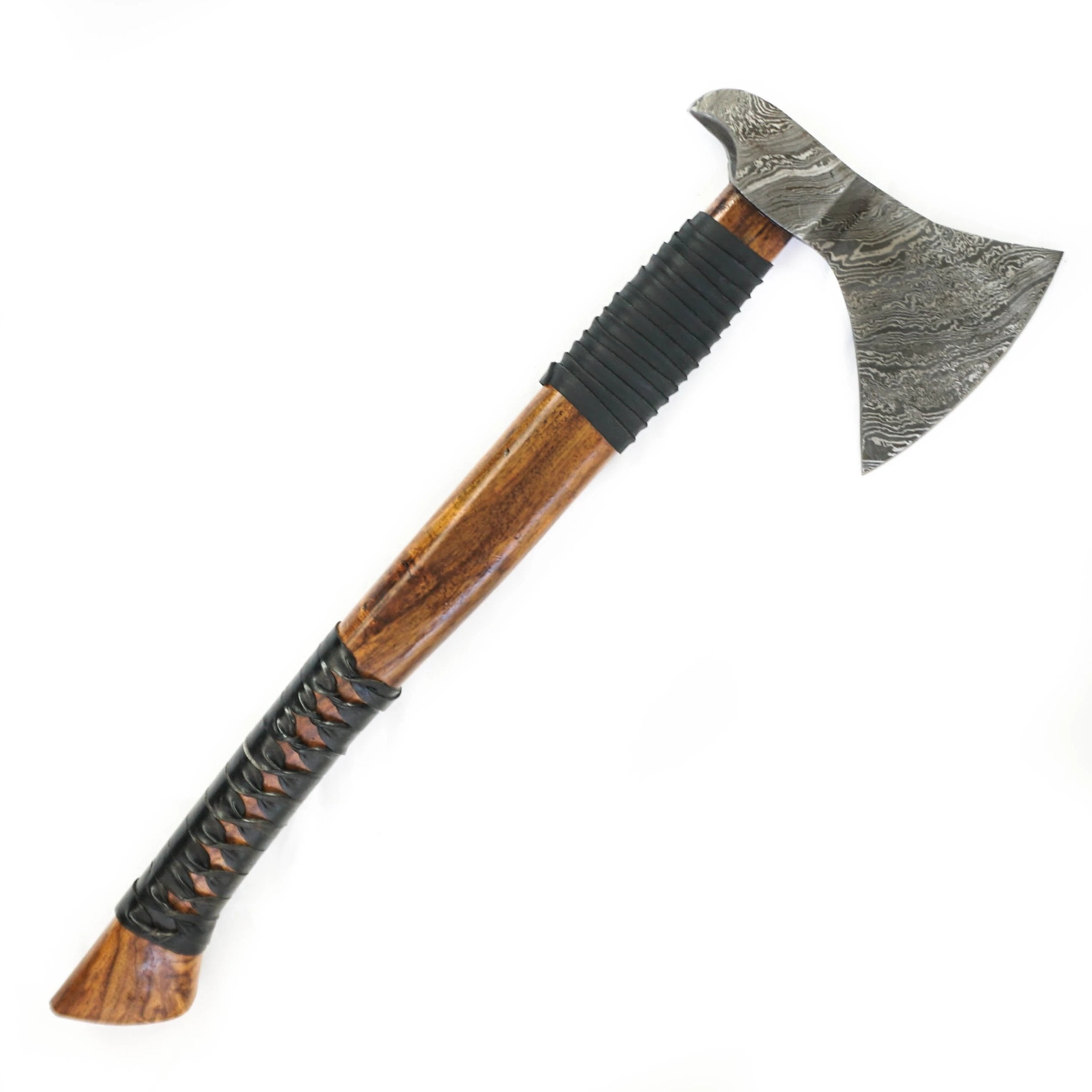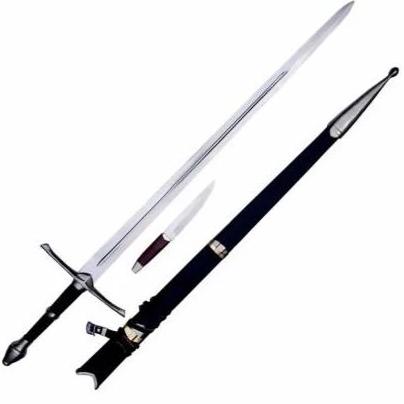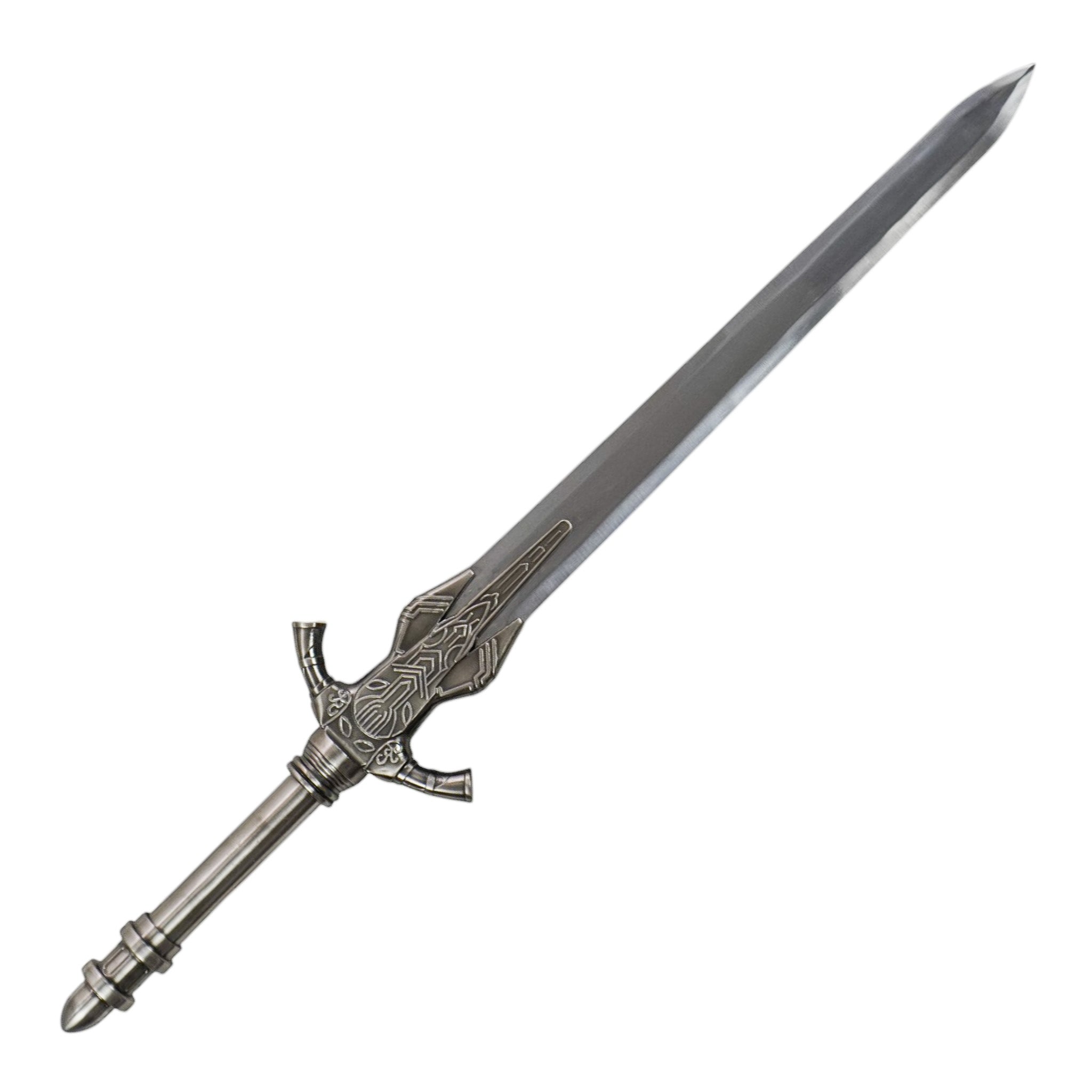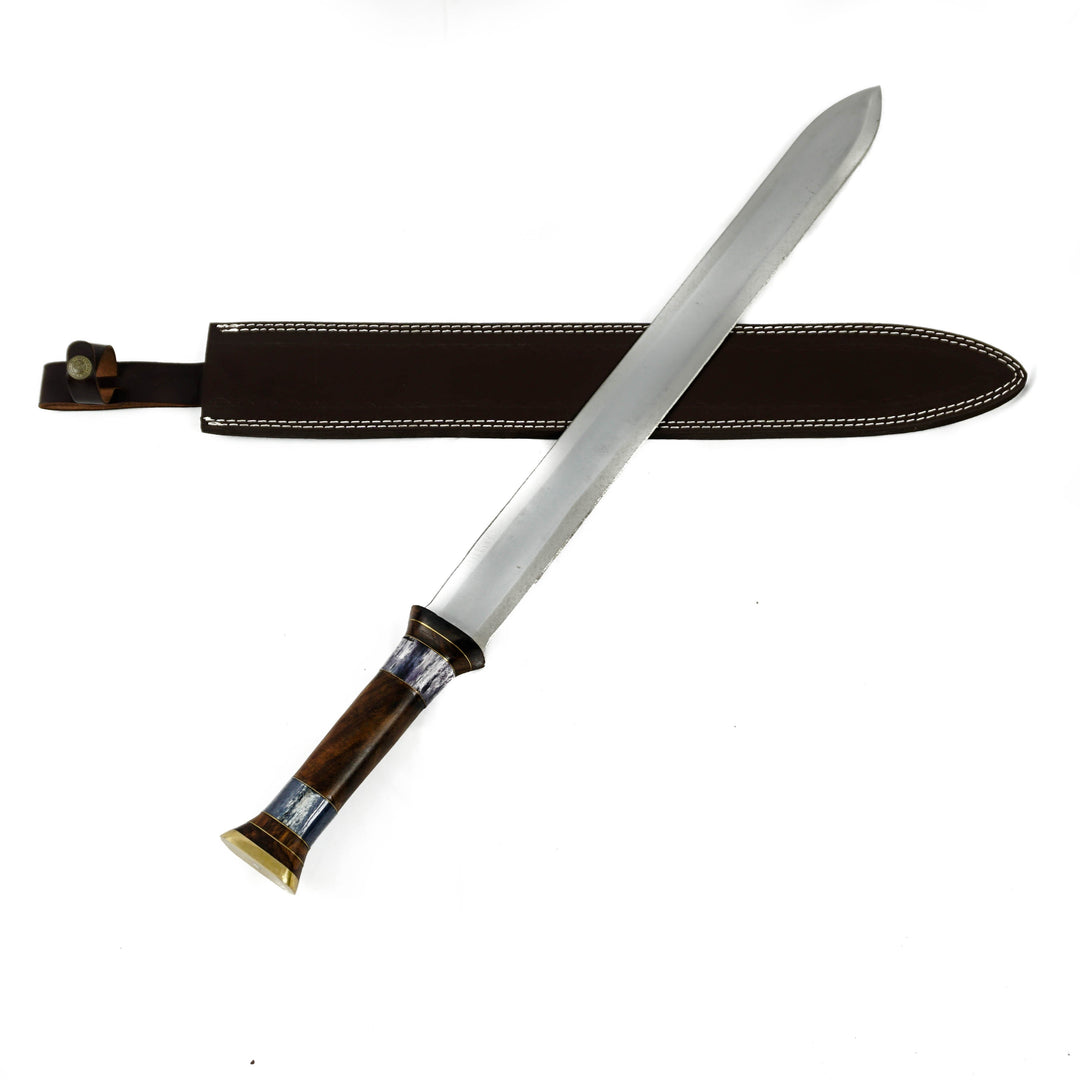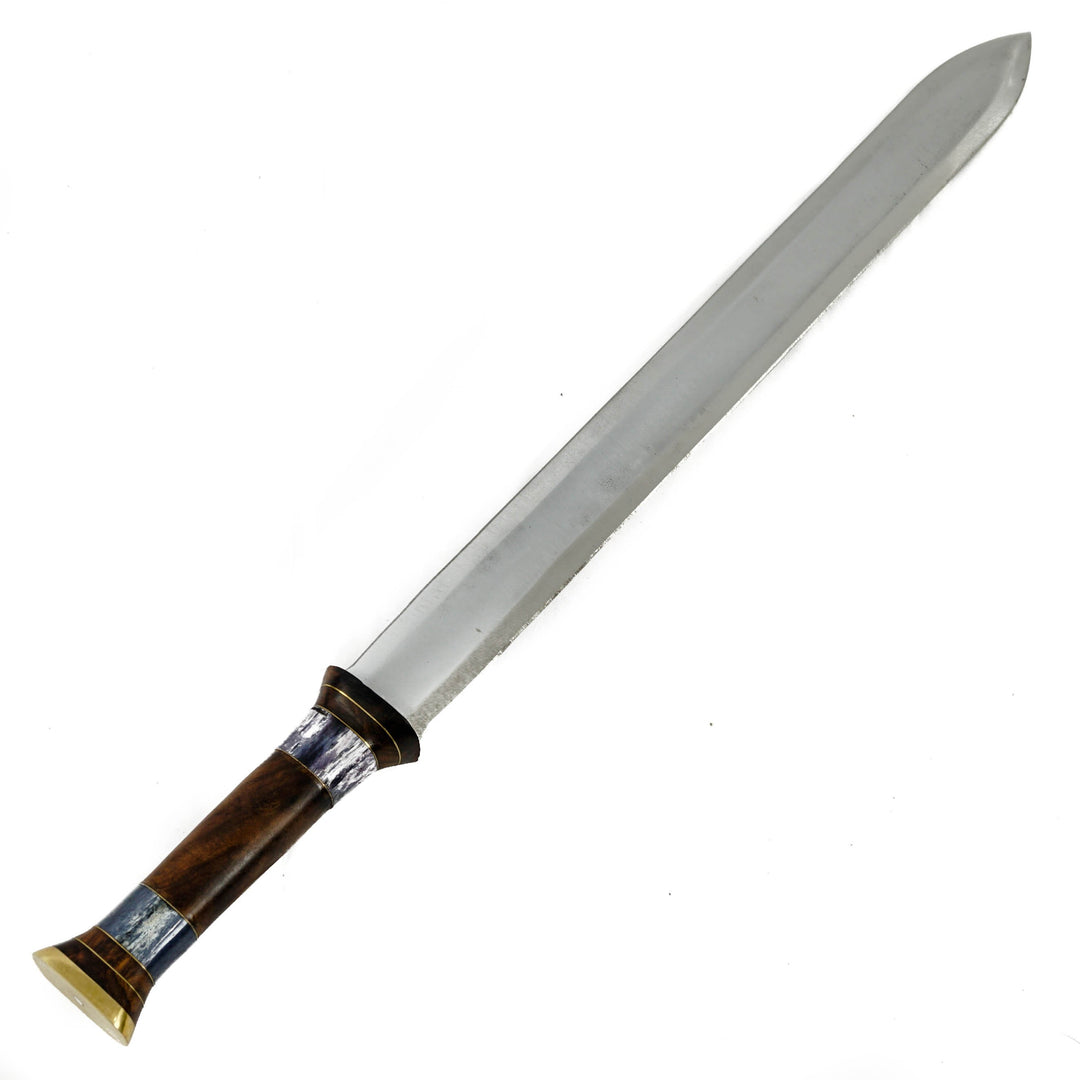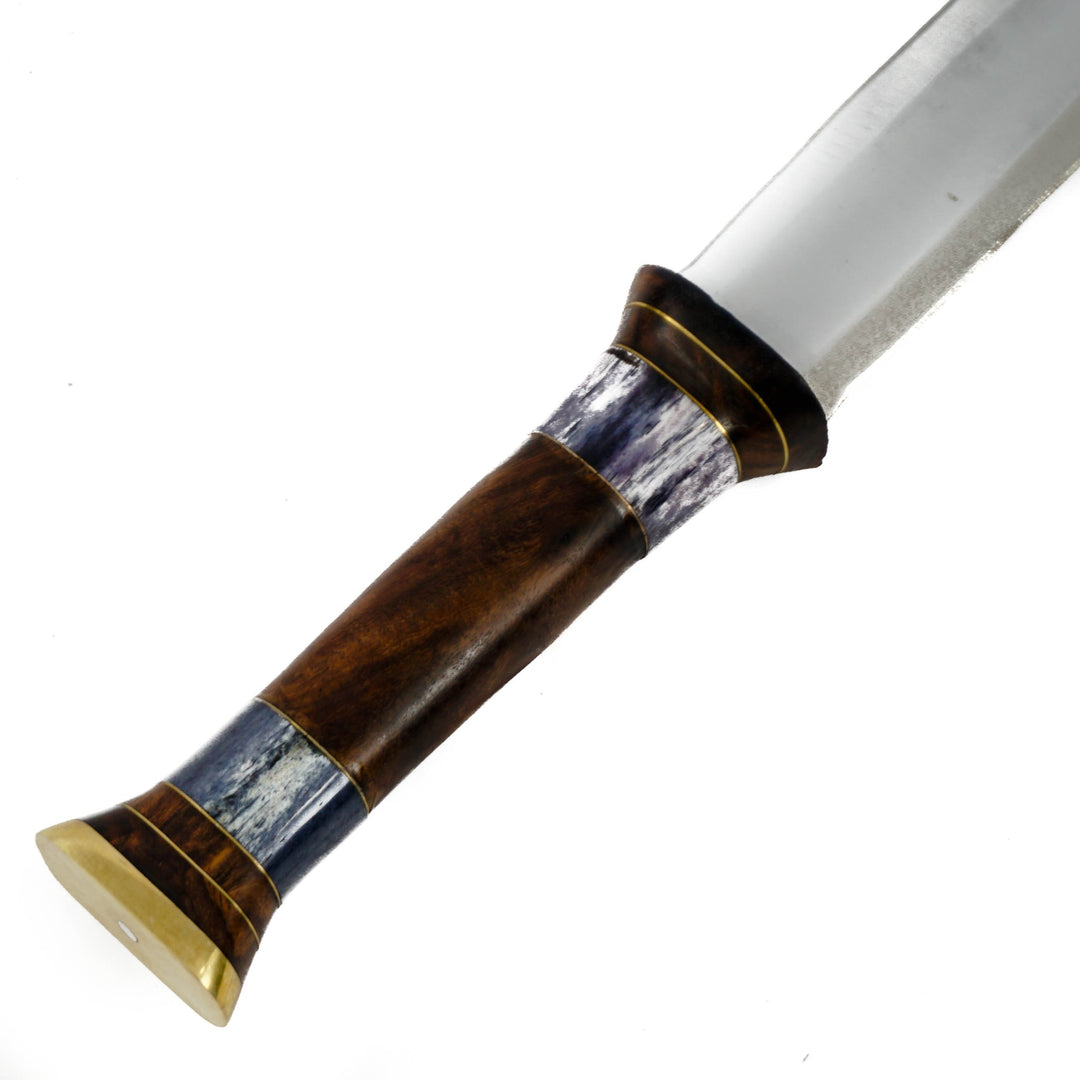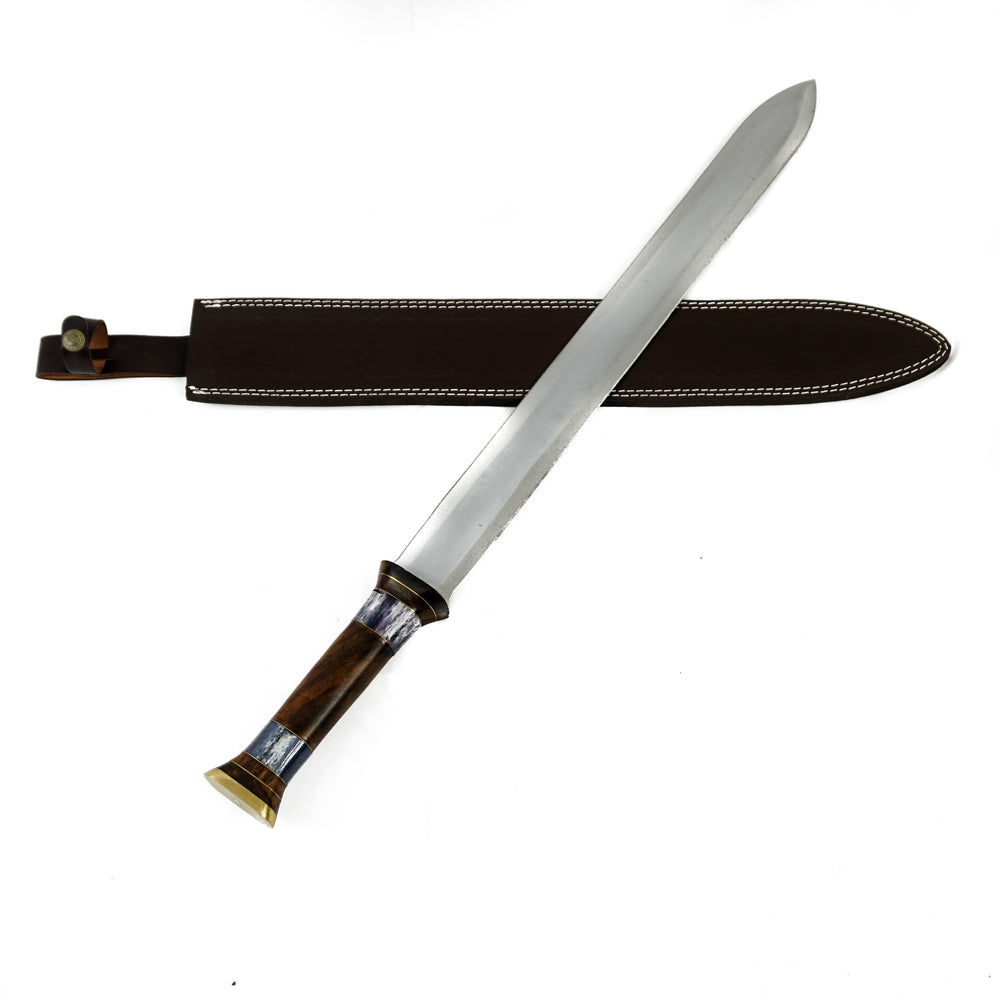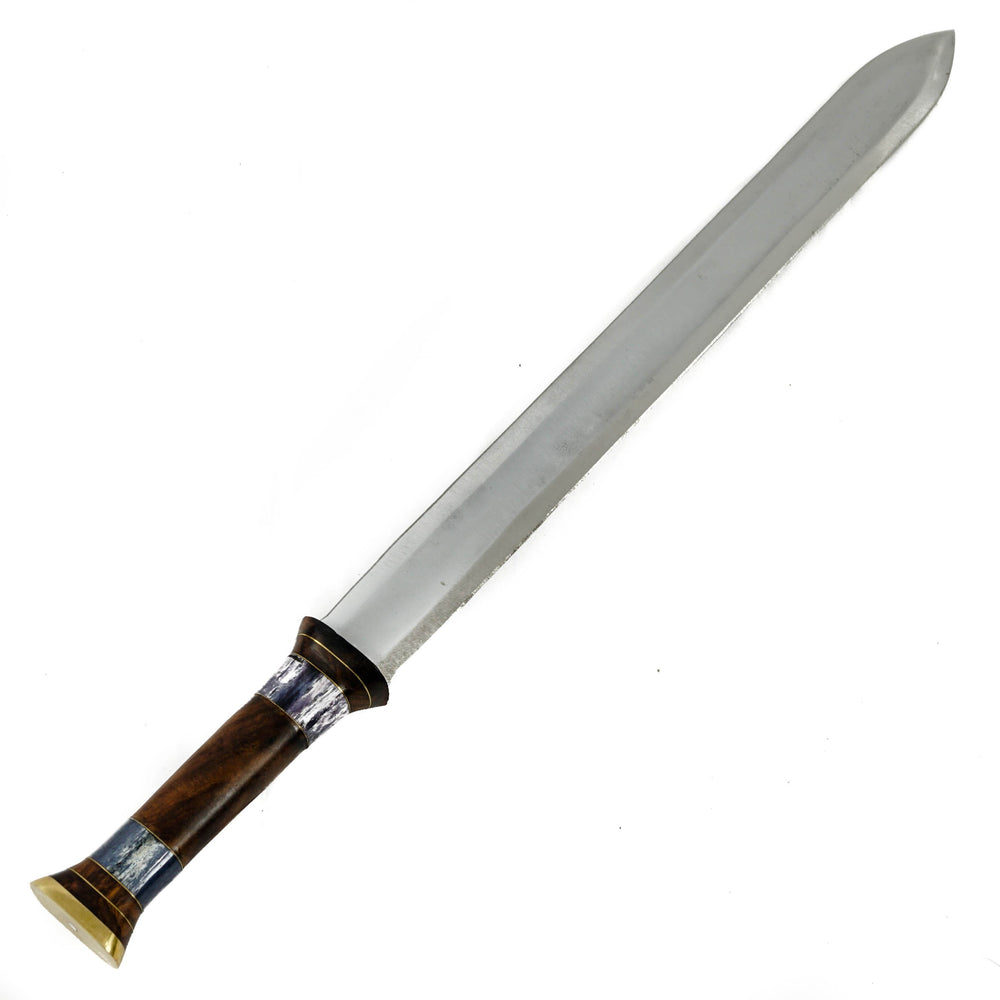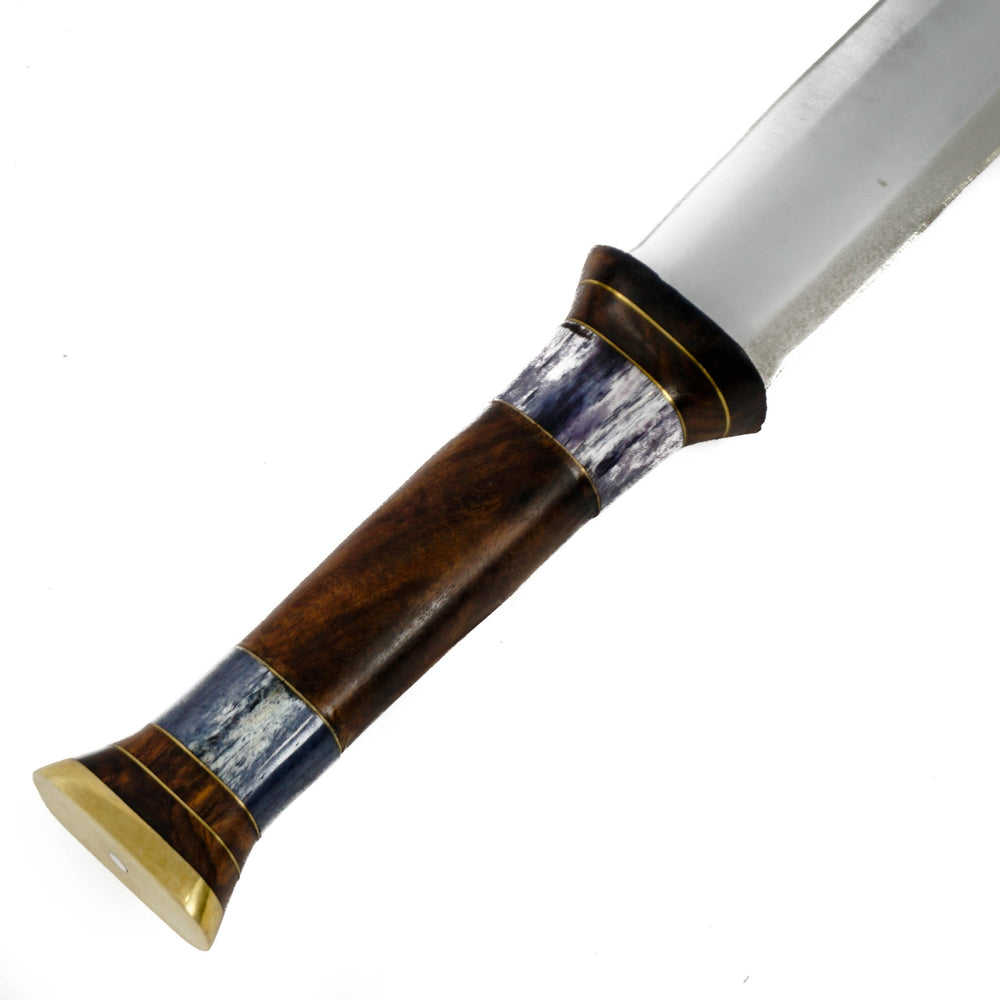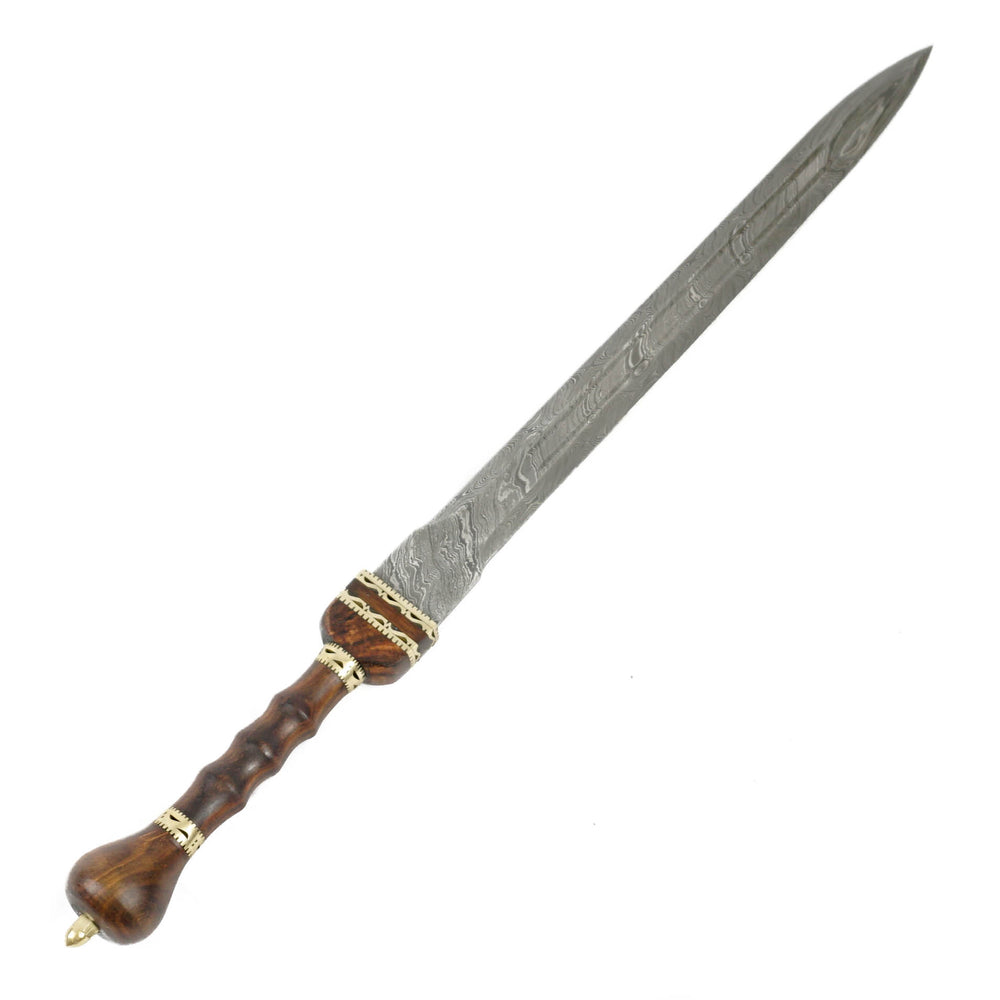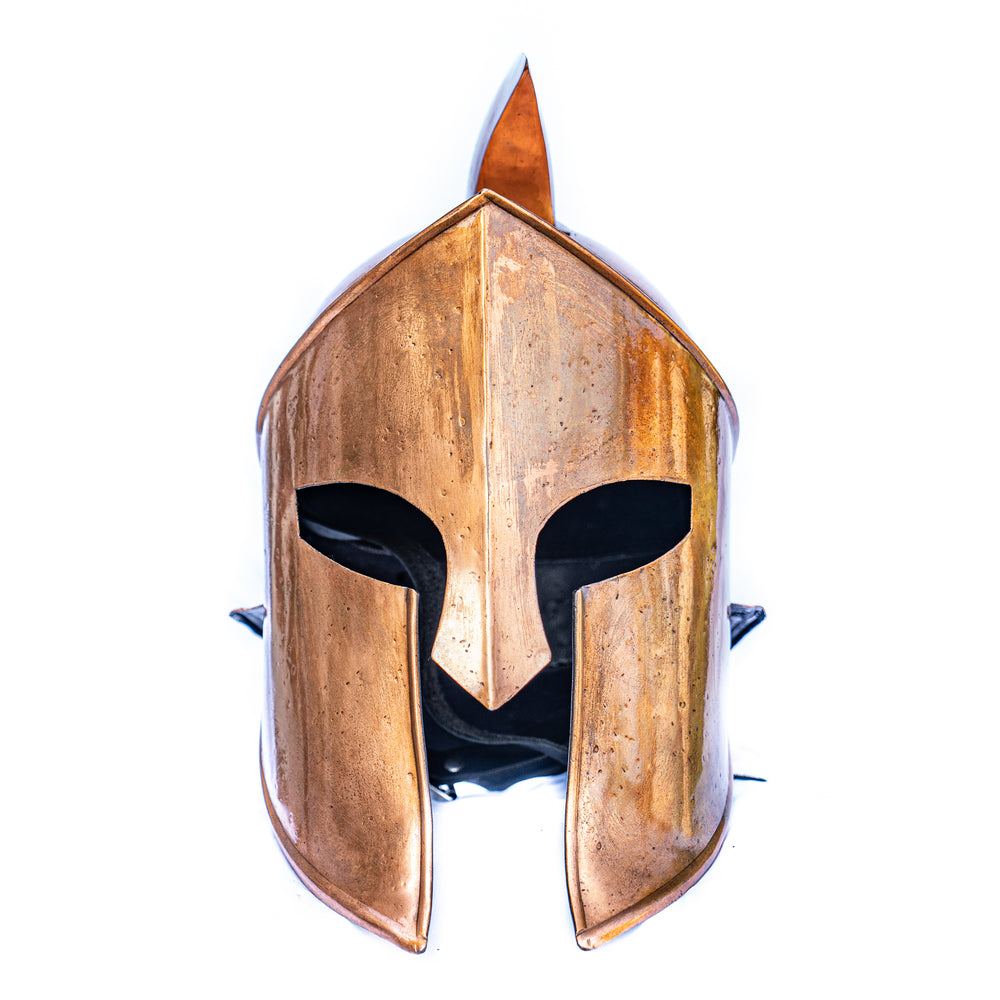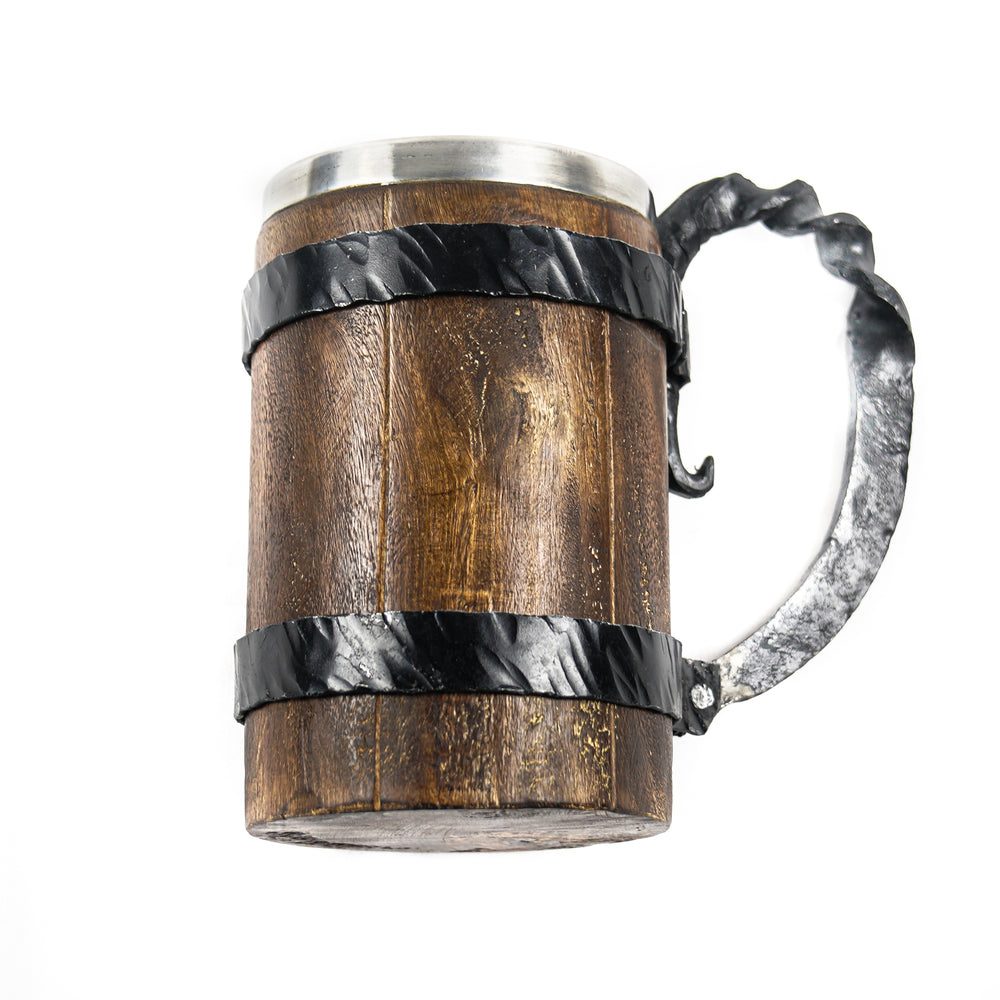Legacy Forged: The Pompeii Gladius Sword - High Carbon 1095 Steel Gladiator/Roman Sword
Step into the robust legacy of the Roman Empire with the iconic Pompeii Gladius Sword. This precise reproduction embodies the timeless design of the ancient Roman foot soldier’s primary weapon, blending history and modern craftsmanship. The Pompeii Gladius is more than a sword; it's a historical voyage waiting to be relived in your hands.
Historical Significance: The evolution of the Gladius reflects the expansive and adaptive nature of the Roman Empire. Initially drawing inspiration from the Greeks, the Romans gradually adopted the Celtiberian sword designs, leading to the birth of the Gladius Hispaniensis. As the foot soldier's primary weapon, the Gladius was central to the Roman combat strategy, first disarming foes with javelins, then engaging in deadly close combat, a dance of death orchestrated with the Gladius.
Blade Craftsmanship
- Material: Crafted from High Carbon 1095 Steel, known for its edge retention and hardness, this blade mirrors the properties of the ancient Gladius swords. With a carbon content of .95%, it stands as one of the highest carbon steel blades, superseding the commonly used 1045 steel with a mere .45% carbon content.
- Hardness: Exhibiting a Rockwell Hardness of 56-58 HRC, the blade resonates with the enduring spirit of the ancient Roman warriors, ready to face the rigors of battle.
- Design: Versatile and deadly, the blade is designed for both thrusting and cutting, a hallmark of the Roman martial mastery.
Handle and Comfort
- Material: The handle, crafted from premium wood, adorned with brass bolsters, is a tribute to traditional craftsmanship, ensuring a solid grip for precise control in combat.
- Length: 28" with a handle length apt for single-handed operation, experience the comfort and control reminiscent of the Roman era.
Sheath
- Material: The sword comes housed in a durable leather sheath, a nod to the authentic Roman design, ensuring protection and ease of carry.
Legacy Relived: The Pompeii Gladius Sword is not just a weapon; it's an artifact that transports you to the era of the Romans. As you grasp the hilt, you’re holding a piece of history renowned for its dominance over battlefields of ancient times. Whether a collector of fine blades or a history enthusiast, the Pompeii Gladius Sword is a tribute to the legendary Roman Empire, a legacy forged in high carbon steel.

